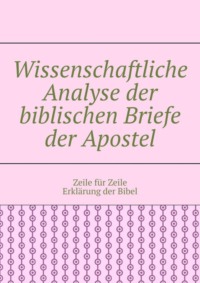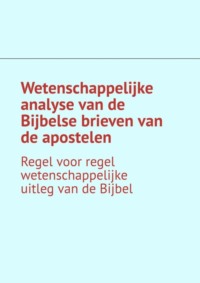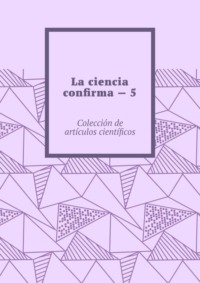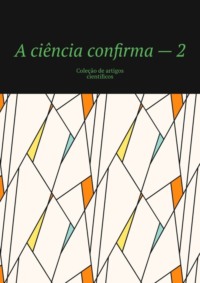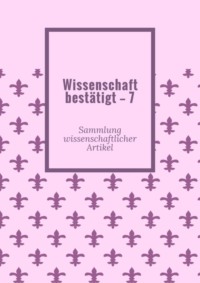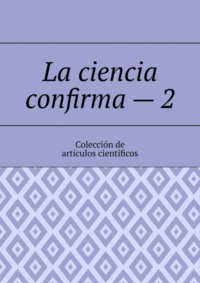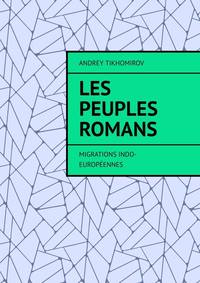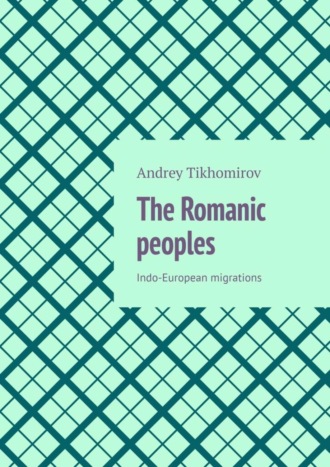
Полная версия
The Romanic peoples. Indo-European migrations

Frazer J.G., The golden Bough, London, 1923, Moscow, Political Literature Publishing House, 1986, p. 158: “The main deity of the Lithuanians was the god of thunder and lightning, Perkunas or Perkuns, whose resemblance to Zeus and Jupiter was often noted. Oak trees were dedicated to him, and when Christian missionaries cut them down, the locals openly expressed dissatisfaction with the fact that their forest deities were destroyed.In honor of Perkunas, eternal lights burned, supported by the wood of certain oak trees, if such a fire died out, it was again lit by rubbing pieces of a sacred tree. oaks, and women -. lindens This mozh¬no conclude that the oaks are seen being male, and li¬pah – female. “In connection with the affirmation of patriarchy among the Indo-European peoples, the oak became a “sacred” tree, and linden was a “bad” tree. “Linden” in Russian is called fake, fake. (ibid., p. 580). As the fire is lit, with the help of two cross-shaped stick-bars, the prototype of the future cross: “In Wales, the lights of Beltan, as usual, were also burned in early May; however, the date of this ceremony ranged from April 30 to May 3. Sometimes the fire was ignited by friction of two oak bars, which follows from the following description: “The fire was kindled in this way. Nine people turned their pockets inside out so that there wasn’t a single coin, not a single piece of metal. Then the men went into the nearby forests and collected nine different brushwood All this took shape in the place where the bonfire was to be laid out. A circle was drawn on the ground and firewood was folded crosswise inside it. The audience, closing the ring around the fire, watched what was happening. One of the men took two oak beams and rubbed them until until the flame appeared, the fire spread over the brushwood, and soon a huge bonfire flared up. Sometimes two bonfires were laid one against the other. These lights – one or both – were called coelcerth (translated: bonfires). Round pies from oatmeal and wholemeal were divided into four parts and put in a small bag from under the flour, and each had to take out its part from there. The last piece went to the one who held the bag. Those who pulled a piece of cake from wholemeal had to jump over the fire three times or run three times between two bonfires, which, according to those present, promised a plentiful harvest. The screams and squeals of people jumping through the flames were heard throughout the district. Those who pulled out a piece of cake from oatmeal sang, danced and clapped their hands, cheering the owners of wholemeal tortillas, jumping over the flames or running between two bonfires. “Frazer does not exclude that” … before plunging into the dense forests of Europe, the Aryans really, as some researchers believe, wandered with their herds along the vast steppes of Russia and Central Asia …»(ibid., pp. 662—663).
Arkaim (reconstruction and aerial photography)

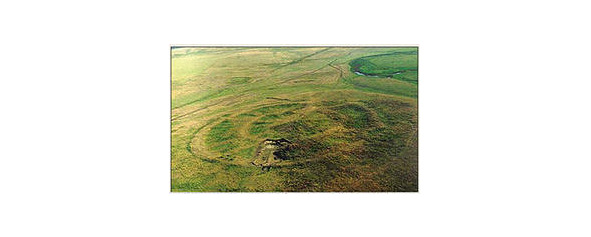
Similar structures exist in Europe; they are called ring ditch culture. About 150 such structures are known to archaeologists in Germany, Austria, Slovakia and the Czech Republic. The diameter of the ditches varies from 20 to 130 meters, all of them belong to the 5th millennium BC. In their vicinity, tools, bones and some other artifacts were discovered. The largest of these structures was found in Leipzig in the 1990s, and another one was found near the village of Aitra near Leipzig. Findings in the context of circular ditches and related settlements with a characteristic feature – long houses – it is assumed that they were continuously used for about 200 years until about 4600 BC Ring ditch builders are usually associated with the culture of linear tape ceramics. Apparently, they lived in community long houses and were engaged in cattle breeding: cattle, sheep, goats and pigs.
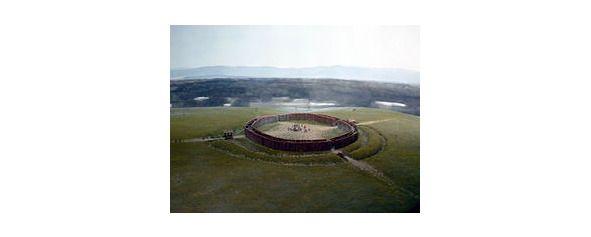
Germany: Quintana
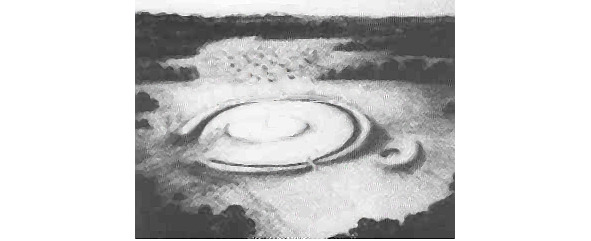
Germany: Goloring
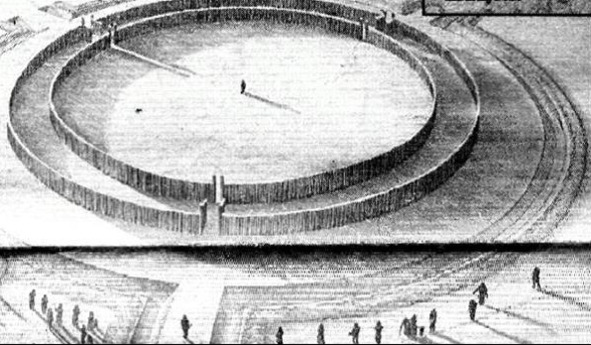
Scheme of the village (reconstruction)

Symbol of India – Wheel (Chakra)

Megaliths of Vera Island are a complex of archaeological sites (megaliths – a chamber tomb, dolmens and menhirs) on the island of Lake Turgoyak (near Miass) in the Chelyabinsk region. The oldest megaliths on Earth were supposedly built about 6 thousand years ago, in the 4th millennium BC, that is, before the famous Stonehenge in England (5 thousand years ago, the 3rd millennium BC).

“Shigirsky idol” is considered the oldest wooden sculpture on the planet, whose age, according to scientists, is 10 thousand years old.
The Urals – this region geographically since the Paleolithic has been a bridge from south to north – this mountain highway from the Great Steppe to the Arctic turned out to be very important for the era of the initial settlement of Eurasia. In all mythologies, mountains are a divine sphere. In addition, all the early dwellings were in caves (a person mastered the planet, driving out a cave bear from there). Mountains are a convenient place for “nests” in which people live; it’s good to hide in the mountains. It is no accident that the Urals were both expensive and a cluster of “nests.” There was, on the one hand, a crossroads of heavy traffic, and on the other, shelters. It is in the Urals that the oldest civilization in the world arises, whose descendants found the oldest states on the planet – in Sumer, Ancient Egypt, India, Persia and China. Therefore, the Sumerians who came to Mesopotamia laid the foundations of one of the greatest civilizations there, and that is why the Sumerian writing was born “like a god from a car” – suddenly and immediately in developed form, its foundations already existed among the ancient Indo-Europeans. As far back as 1961, 3 clay tablets were found near the Romanian village of Terteria, covered with pictographic writing and dating from the 5th millennium BC (they are 7 thousand years old!), That is, long before the Sumerians (3rd millennium BC)) The Sumerians confidently placed their ancestral home somewhere in the northeast. Where – they themselves did not exactly know, although the central hero of their epic Gilgamesh is called “Everything Who Saw.” The only sign of the ancestral homeland is the mountainous terrain.
Now we can say with confidence that these are the Ural Mountains!
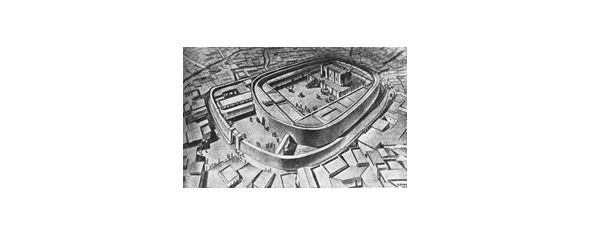
“Round Temple” and residential areas of the Sumerian city. The settlement of Hafaj. The first half of the 3rd millennium BC in. Reconstruction
In the language of the Sumerians, the word “ur-er-ar” retained a double meaning – a mountain and a country. Compare the names of the geographical locations of the Mesopotamia (Mesopotamia) and the adjacent territories, including Sumer: Eris, Ararat, Ur, Urartu, Uruk, Arias; names of rulers, heroes of the most ancient epic of this region: Urzabab, Urzin, Urnamu, Urukagin; the oldest temple tower – ziggurat. Everywhere there is a base “ur-er-ar”. Mansi (Finno-Ugric language) the word “ur” means “mountain”, “hill”. The common Turkic word “Aral”: “island”, “interfluve”, “hill”. This proves the reality of the existence of the oldest nostratic macro-family of languages. As archaeological cultures that could be correlated with the region of the pan-Indo-European cultural complex, scientists call the Khalaf, Ubayd, Chatal-huyuk cultures in South-West Asia and Kuro-Araksin in Transcaucasia. According to these scholars, the secondary intermediate ancestral home of the Indo-Europeans was the Northern Black Sea Region, where their settlement dates back to the 3rd millennium BC. To the south of the range of the Indo-European family, the core of the Semitic-Hamitic (Afrasian) language family was probably formed. To the north of the Indo-Europeans, apparently, carriers of the Kartvelian proto-language lived, to the east – the Dravidian proto-language. The ancestral home of the Uralic (Finno-Ugric and Samoyedic) Turkic, Mongolian, and Tun-Hus-Manchu languages was probably on the northeastern periphery. This nostratic macro-family of languages includes the Indo-European, Semitic-Hamaite, or Afrasian, Kartvelian, Uralic, Dravidian, Turkic, Mongolian, Tunguso-Manchurian, Chukchi-Kamchatka and, possibly, Eskimo-Aleutian language families. The languages of this huge macro-family are now spoken by over 2/3 of the world’s population.
The formation of the Romance peoples
Romance peoples (novels, from the Latin name of the city of Rome – Roma) – a group of peoples of different ethnogenetic origin, united by the use of romance languages. Romance languages, a group of related languages of the Indo-European family, developed from the Latin language: Spanish (Castilian), Portuguese, Catalan, Galician, French, Occitan, Italian, Sardinian, Romansh, Romanian, Moldavian, and also extinct in the 19th century. Dalmatian language. Therefore, under the novels (Romanesque peoples) today are meant the Spaniards, Portuguese, Catalans, Galician (Gallego), French, Occitan (Provencal), Italians, Sardinians, Romansh (Ladins and Friulians), Romanians, Moldavians, etc.
Of the Romance languages that are being supplanted or supplanted by other languages, it is worth mentioning: Romansh, remnants of the Dalmatian language on the Istrian peninsula (now belongs to Italy, Slovenia and Croatia). Romance languages arose during the Romanization of the vast territories in the south, southwest and center of western Europe by the Romans from the 3rd century on. BC to 2 in. ad. The Latin language imposed by the Romans, having entered into interaction with the local languages of the indigenous inhabitants, served as a source for the formation of future Romance languages, and on their basis the Romance peoples gradually formed. Latin, as a winning language, has become the basis language for all Romance languages. However, the historical development of the emerging Romanesque peoples led to the fact that Romance languages over the centuries-old period of their development began to differ in many respects from the Latin base language.
The question of the origin of the Romance languages began to be intensively developed in the 19th and 20th centuries. In the 60s of the 19th century, the Italian linguist G. Ascoli and his followers argued that the discrepancies between the Romance languages are explained by the influence of local languages on Latin in the Romanized regions. The drawback of Ascoli’s theory, which later became known as the theory of the substrate, lies, however, in that its authors focused on the Neromanian elements in Romance languages, although the structure of these languages is clearly Roman. Local languages could influence Latin, however, the origin of all Romance languages can be correctly understood, if we proceed from the understanding of Latin as their basic language. The German philologist G. Gröber in the 80s of the 19th century emphasized that the period of Romanization lasted 300—400 years and that during this period the Latin language itself underwent certain changes. Having arrived in Dacia in the 1st century, it was already different from the Latin language, which several centuries earlier penetrated into Sardinia, and later into Iberia; and, therefore, the Romance languages formed from Latin were not only similar, but also different from each other, since each of them arose from Latin in different historical periods, and from this it is possible to determine the formation of various Romanesque peoples. Proponents of this theory, dubbed chronological, managed to show the comparatively greater linguistic archaism of Western Romance languages compared to Eastern Romance languages. For example, in Western Romance languages, in particular in French and Spanish, the plural is formed using the old Latin ending -s, while the Romanian and Italian languages no longer retain this Latin ending. However, supporters of the chronological theory did not so much explain the emergence of Romance languages as they interpreted individual cases of discrepancies observed in the sound, grammatical and lexical systems of individual languages.
At the end of the 19th century The so-called dialectic theory of the formation of Romance languages sought to substantiate the French linguist F. Moll in his book “Introduction to the Chronology of Vulgar Latin” (1899). In explaining the discrepancies between languages, he proceeded from the dialectical diversity of the Latin language itself during the period of Romanization. Depending on which local dialect of the Latin language fell into a particular Romanized province, the further destinies of the Romance languages arising in this territory were determined. This theory, however, also suffered from one-sidedness, reducing the problem of the origin of Romance languages to the dialectical discrepancies of the Latin language, which have not been studied enough. Finally, the theory of social connections determined a greater or lesser proximity between individual Romance languages and their dialects, social and economic ties that existed in antiquity between Romanized territories. Thus, the proximity of the Sicilian dialect to the Italian language and its relative remoteness from the Sardinian are explained by the primordial ties that existed between Sicily and the southern part of the Apennine peninsula. Using the data of this theory, linguists already in 1878 discovered a special Franco-Provencal group of dialects distributed in southeastern France and spreading over the territories of the regions of Savoy, Dauphine, Franche-Comté, part of Lorraine and the French part (linguistically) of Switzerland. At the same time, it was possible to establish that the well-known linguistic unity, covering so many different areas, is by no means accidental. It was on this territory that the second Burgundian kingdom existed in the 5th-6th centuries.
Конец ознакомительного фрагмента.
Текст предоставлен ООО «ЛитРес».
Прочитайте эту книгу целиком, купив полную легальную версию на ЛитРес.
Безопасно оплатить книгу можно банковской картой Visa, MasterCard, Maestro, со счета мобильного телефона, с платежного терминала, в салоне МТС или Связной, через PayPal, WebMoney, Яндекс.Деньги, QIWI Кошелек, бонусными картами или другим удобным Вам способом.




